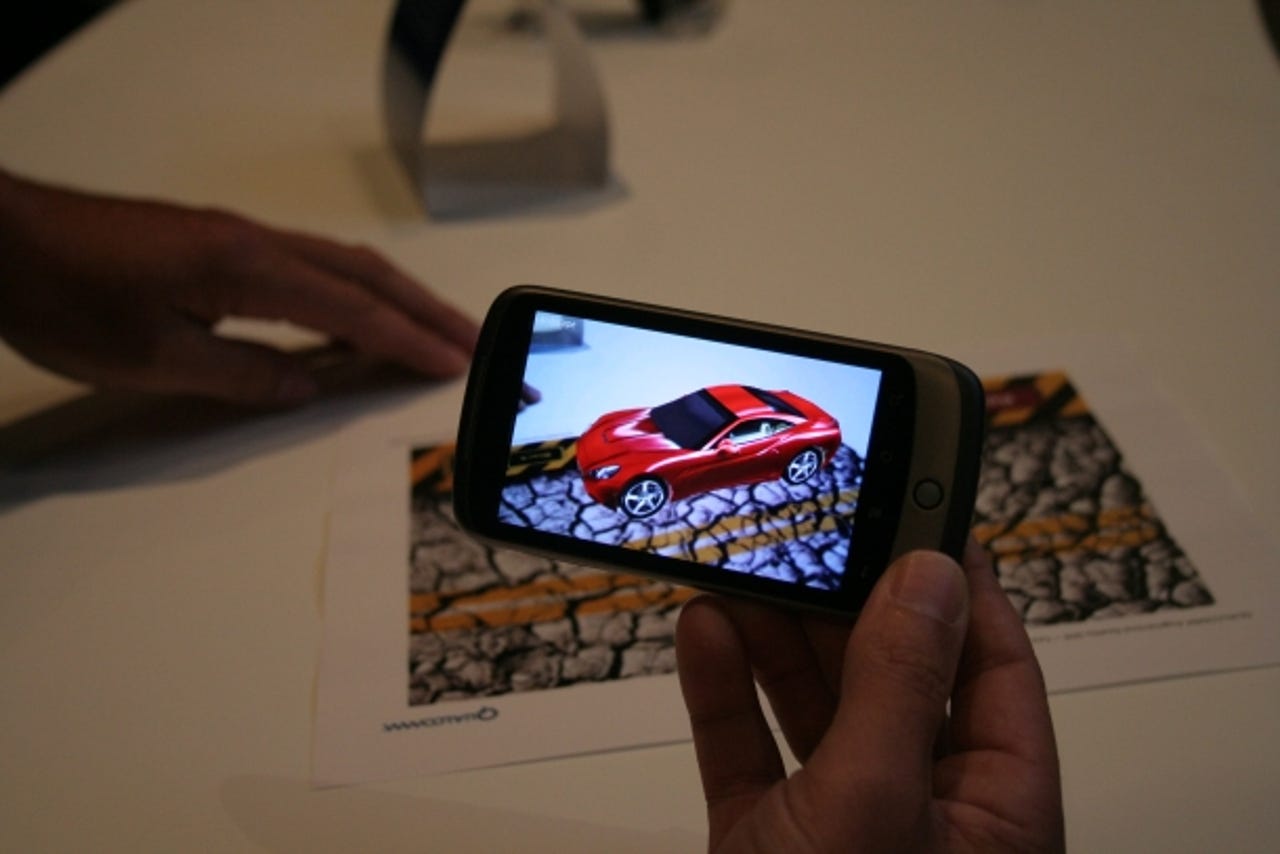Qualcomm demos augmented reality apps


Qualcomm demonstrated its augmented reality app projects at the company's IQ 2010 event at London's Science Museum on Wednesday.
The company says that it is working with a number of academic institutions to further its research in augmented reality (AR) and that it has already established AR gaming studios at the Georgia Institute of Technology.
However, far from being restricted to gaming, the company hopes to see AR being applied to applications such as instructional 'how-to' guides, learning aids — such as languages or childrens' education — as well as marketing/promotional uses.
"AR transforms your mobile device into what has been described as a magic looking glass where you can interact with the real world. With a dedicated in-house team of AR technologists and visionaries, and collaborations with leading academic institutions such as Georgia Institute of Technology and Technology Institut Graz (Austria), Qualcomm's AR vision-based platform enables a new breed of user experiences," says the company's official augmented reality web page.
Qualcomm is also hosting an Augmented Reality Developer Challenge to try and encourage developers to work on new apps, offering a total of $200,000 (£129,000) prize money — including a $125,000 first prize for the victor. The closing date for entries is 7 January, 2011 and the winners are expected to be announced at Mobile World Congress in February.
The main application on display at IQ brought the classic 1960's board game Rock'em Sock'em Robots into the virtual sphere.
The prototype runs on a standard Android 2.1 or higher device with single and multiplayer options, allowing two users to duke it out head-to-head.
Aiming the phone's camera at the specially crafted playing surface brings the robots to life on-screen and allows the player to control their character.
Using the handset's touchscreen display as a controller, the player can control their character's movements and attacks. There's a slight delay in the gameplay of the prototype, but the company hopes that real-time implementation for this app, as well as others, is not too far away.
The application currently needs a special game board to provide contrast for the camera and allow the players to recognise the boundaries of the AR game. Different game boards were also demonstrated for playing the game in different environments.
"There's actually nothing on the table but a piece of paper but when you look at it on the phone, you actually see a game there and you and another person can play that virtual game," said Paul Jacobs, chairman and chief executive of Qualcomm during his keynote.
Qualcomm also demonstrated other uses of the technology, such as choosing the colour of a car that appears when the AR app is running and aimed at the appropriate board.
During his keynote speech at the event, Jacobs also demonstrated how easily pictures can be transferred from a phone's camera to internet-enabled photo frames with the press of a few buttons.
The company is set to release the augmented reality SDK "later this fall" so as to give people enough time to develop new apps for the Augmented Reality Developer Challenge.
Some organisations are already beginning to see the value of developing augmented reality applications. ZDNet UK spoke to Timo Elliott, senior director of strategic marketing at SAP, who agrees that augmented reality is one area in which consumer developments are leading business innovation.